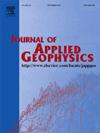Geophysical signature of the Salobo IOCG deposit and implications for mineral exploration
IF 2.2
3区 地球科学
Q2 GEOSCIENCES, MULTIDISCIPLINARY
引用次数: 0
Abstract
Geophysics is a prerequisite for effective mineral exploration projects. Its significance has increased recently with technological advancements, deeper exploration and geophysical data is now a crucial tool for reducing drilling risks. Salobo, a world-class IOCG (Iron Oxide Copper-Gold) deposit (1088.9 Mt. at 0.62 % Cu and 0.35 g/t Au) in the Carajás Mineral Province, is located in secondary structures associated with the first-order Cinzento shear zone. Due to their high sulfide and iron oxide content, IOCG deposits often make excellent geophysical targets. However, the IOCG classification is broad and encompasses deposits with significantly different characteristics. These differences include petrophysical characteristics which directly impact their geophysical signatures and require specific exploration models. Multiscale magnetic, gravity gradiometry, gamma spectrometric, TDEM (Time-Domain Electromagnetics), and DCIP (Direct Current resistivity and Induced Polarization) data collected at Salobo were used to investigate alteration zones and mineralization, highlighting the importance of an integrated approach in geophysical exploration. Priority guidelines for IOCG geophysical exploration were created considering Salobo's geophysical footprint. These can be used to optimize drilling campaigns in geological contexts similar to Salobo's.
萨洛博IOCG矿床地球物理特征及其找矿意义
地球物理是有效进行矿产勘查项目的先决条件。近年来,随着技术的进步,深度勘探和地球物理数据已成为降低钻井风险的重要工具。Salobo是一个世界级的氧化铁铜金矿床(1088.9 mt,铜含量0.62%,金含量0.35 g/t),位于Carajás矿产省,位于与一级Cinzento剪切带相关的二级构造中。由于其高硫化物和氧化铁含量,IOCG矿床往往是很好的地球物理目标。然而,IOCG的分类很宽泛,涵盖了具有显著不同特征的矿床。这些差异包括岩石物理特征,这些特征直接影响其地球物理特征,需要特定的勘探模型。利用在Salobo收集的多尺度磁、重力梯度、伽马能谱、时域电磁学(TDEM)和DCIP(直流电阻率和感应极化)数据来研究蚀变带和矿化,突出了综合方法在地球物理勘探中的重要性。考虑到Salobo的地球物理足迹,制定了IOCG地球物理勘探优先指南。这些技术可用于在类似Salobo的地质环境中优化钻井作业。
本文章由计算机程序翻译,如有差异,请以英文原文为准。
求助全文
约1分钟内获得全文
求助全文
来源期刊

Journal of Applied Geophysics
地学-地球科学综合
CiteScore
3.60
自引率
10.00%
发文量
274
审稿时长
4 months
期刊介绍:
The Journal of Applied Geophysics with its key objective of responding to pertinent and timely needs, places particular emphasis on methodological developments and innovative applications of geophysical techniques for addressing environmental, engineering, and hydrological problems. Related topical research in exploration geophysics and in soil and rock physics is also covered by the Journal of Applied Geophysics.
 求助内容:
求助内容: 应助结果提醒方式:
应助结果提醒方式:


